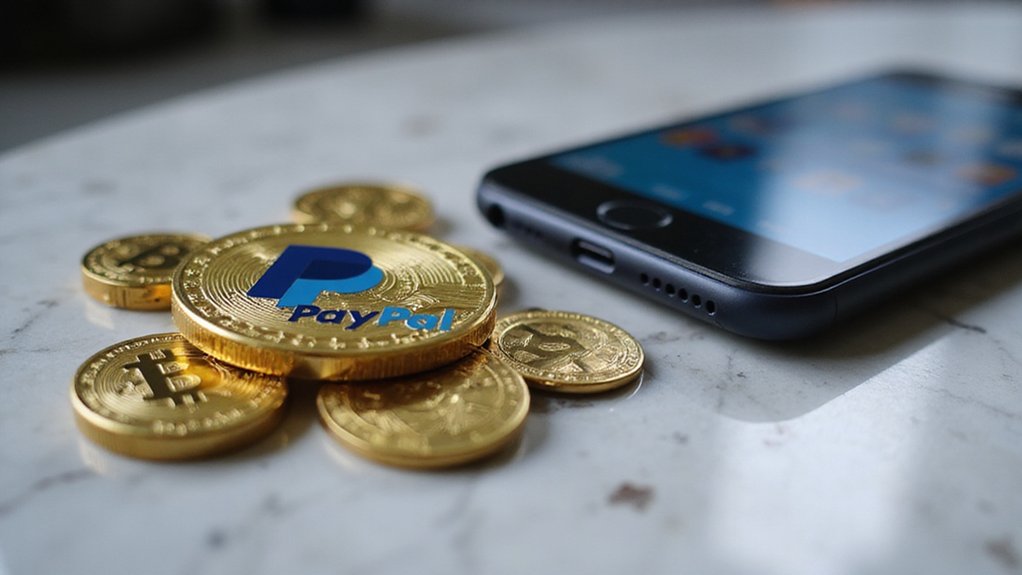Most financial innovations promise revolutionary change while delivering incremental improvements, but PayPal’s PYUSD represents something more pragmatic: a stablecoin designed to solve the fundamental problem that has plagued cryptocurrency payments since Bitcoin’s inception—volatility.
The mechanics are invigoratingly straightforward. PYUSD maintains its dollar peg through full backing by US dollars, treasuries, and cash equivalents—a 1:1 reserve structure that eliminates the speculative gymnastics typical of crypto markets. Built on Ethereum’s blockchain, it leverages smart contract capabilities while operating under Paxos’s regulatory umbrella, creating an unusual hybrid of decentralized infrastructure and traditional oversight. Regular audits conducted by Paxos ensure transparency and stability of reserves.
PYUSD’s 1:1 reserve structure eliminates crypto’s typical volatility while maintaining blockchain functionality under traditional regulatory oversight.
What distinguishes PYUSD from the crowded stablecoin field is its integration depth within PayPal’s ecosystem. Users can transact peer-to-peer on both PayPal and Venmo without fees—a pricing strategy that would make traditional payment processors wince. The platform automatically converts payments to PYUSD or fiat at checkout, eliminating the cognitive burden of managing crypto volatility during transactions.
The interoperability story becomes more compelling when considering PYUSD’s function as a bridge currency across 100+ cryptocurrencies. Compatible wallets span the usual suspects—Coinbase, Binance, MetaMask, Phantom—creating a payment network that transcends platform boundaries. Cross-wallet transfers to Ethereum and Solana addresses extend reach beyond PayPal’s walled garden, though network fees apply (because nothing in crypto is truly free). PayPal has enhanced security by implementing unauthorized transfer reimbursement protections up to $50,000 over a user’s lifetime.
Merchants benefit from reduced processing fees and faster settlement times, while users enjoy up to 4% rewards for holding PYUSD—an incentive structure that encourages platform stickiness. The stablecoin’s liquid asset backing ensures instant conversion capabilities, supporting both everyday transactions and larger commercial payments without the price uncertainty that typically accompanies crypto adoption. Investors must remember that complete loss of investment remains possible despite PYUSD’s stability features.
Perhaps most tellingly, PYUSD addresses cross-border payments by reducing currency exchange risks and processing delays inherent in traditional remittances.
Whether this represents genuine innovation or simply PayPal applying its institutional weight to well-established stablecoin mechanics remains debatable. What’s undeniable is that PYUSD offers something increasingly rare in crypto: boring reliability wrapped in familiar user experience.









